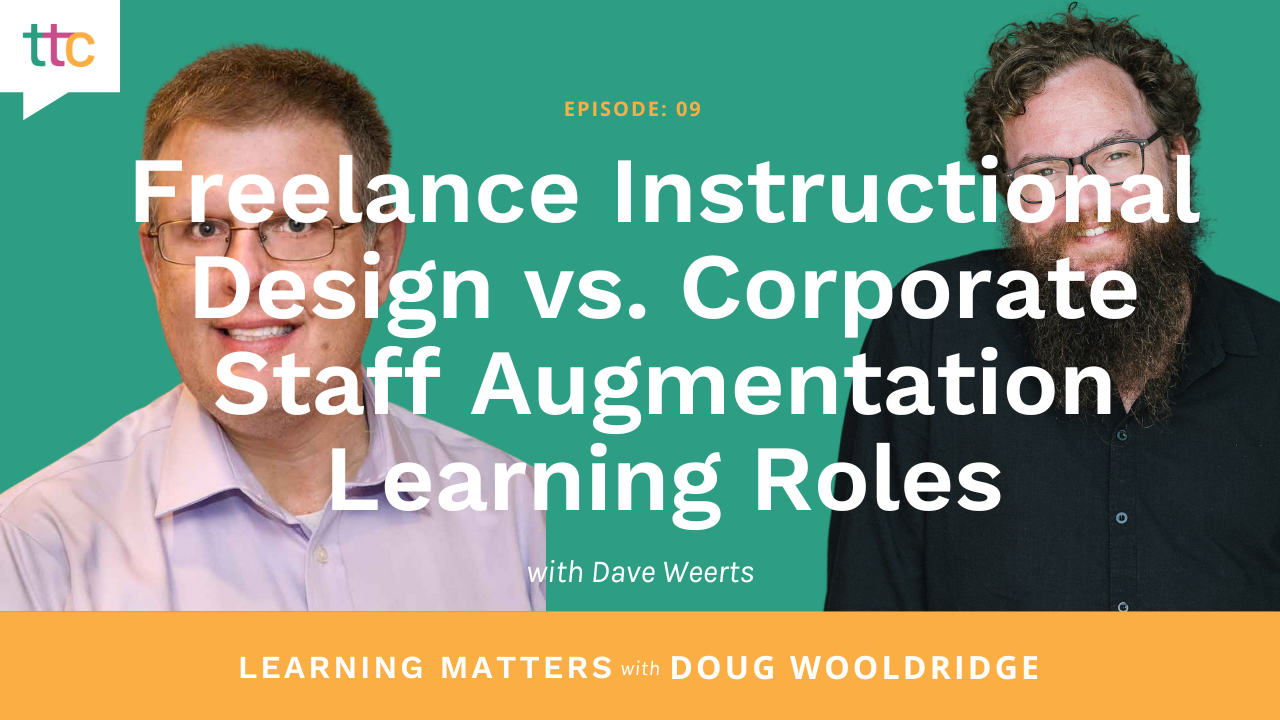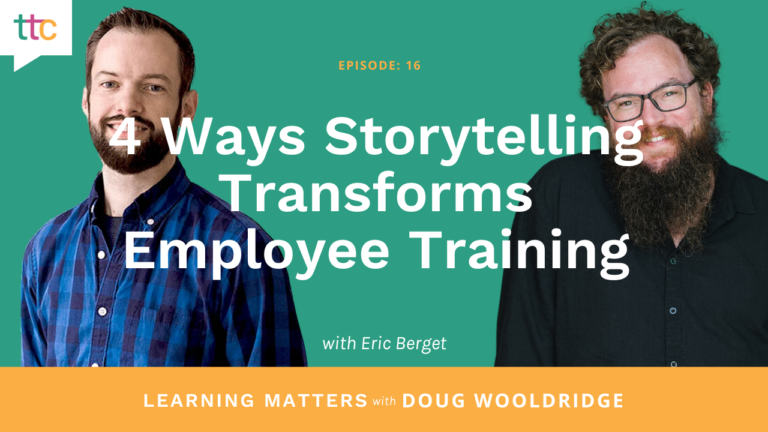Apple Podcasts | Spotify | YouTube
This week we’re joined by Dave Weerts, a guru in the world of adult learning with a fascinating career path that led him there. As web-based training gained popularity, he adapted to creating online courses and simulations, allowing learners to access training anytime, anywhere.
We’re diving deep into his firsthand experiences of game-changing multimedia training elements, the differences between freelancing and staff augmentation, the importance of building strong relationships in the field of learning and development, and more.
The Evolution of Training Delivery
Dave details the major strides made in learning and development content delivery, with the addition of video and audio elements for enhanced learner engagement and retention at the forefront. Simulations have also transformed training by providing immersive environments for learners to practice skills, offering hands-on learning in a risk-free setting for everything from aviation training to medical procedures.
Freelancing or Staff Augmentation?
Some key factors to consider are that freelancing offers more variety through the ability to work with multiple companies at once and it tends to involve project-based work. Staff augmentation, on the other hand, builds deeper relationships over time and truly requires integrating as part of a team.
Limitations of AI in Training
AI presents a boundless frontier of potential applications, but Implementing AI in corporate training comes with a unique set of challenges, especially regarding corporate data protection and maintaining confidentiality. Companies are wary of feeding proprietary data into AI systems due to risks of data leakage or misuse, especially in the tech industry’s manufacturing and fabrication sectors.
Additionally, AI-generated learning content can inadvertently expose confidential data by revealing insights and patterns that should remain private, as AI lacks nuanced human judgment.
Staff Augmentation at Intel
Dave has extensive experience in staff augmentation at Intel, working in the statistics group despite not having a background in statistics. He attributes his success to building strong relationships and embracing diverse perspectives within his team.
He brought an objective viewpoint to the table and used it to focus on understanding the existing learning culture and strengths of his colleagues. Although he lacked formal statistical training, his unique perspective allowed him to ask important questions and challenge assumptions. Dave became an indispensable team member by leveraging his strengths in communication, visualization, and simplifying complex statistical concepts.
The Future of L&D
L&D thrives at the intersection of cutting-edge technologies and time-tested educational practices. While AI and other advancements offer exciting possibilities for enriching employee training and development experiences, they shouldn’t overshadow the enduring value of expert instructional design. The key to unlocking L&D success lies in embracing innovation while fostering the irreplaceable role of skilled human trainers.
Advice for New Learning Professionals
Breaking into the training industry can seem daunting, but with the right mindset and strategy, it is very achievable. Here are some tips for those just starting out:
- Make yourself indispensable: Add value from day one, find gaps you can fill, and become a helpful team player.
- Build relationships: Network within and outside your organization; strong relationships lead to more opportunities.
- Be a sponge: Learn from experienced colleagues, shadow leaders, and stay humble.
- Find your joy: Pursue work that excites you, fueling your passion and career growth.
- Stay current: Keep up with industry developments by attending conferences, taking courses, and following thought leaders.
- Ask for feedback: Regularly seek constructive input on your performance and use it to improve and grow.
The Importance of Relationships in Learning and Development
The training and development industry thrives on strong relationships. Understanding an organization’s culture and building connections with stakeholders are the bedrock of impactful training projects.
Truly effective L&D professionals go a step further. They champion mentorship and knowledge sharing, demonstrating their commitment to fostering a collaborative learning environment. In this fast-paced field, learning from those with firsthand experience offers invaluable perspective, ensuring your skillset stays sharp and relevant.
Staying Current
The training landscape undergoes constant evolution, demanding continuous learning from L&D professionals. New developments and technologies emerge regularly, making it essential to stay up to date. The most successful learning professionals embrace a lifelong learning mindset, viewing skill and knowledge acquisition as a continuous journey, not a one-time event.
Additional Resources
Webinar – How to Create Better Learning Experiences Using Generative AI Images
4 Tips for Driving Learner Engagement, Retention, and Instructional Design Business Growth
Break the Development Barrier: Unveiling the Top Rapid Development Tools and Their Tradeoffs
Mastering Instructional Design: 5 Essential Dos and Don’ts for Instructional Designers






